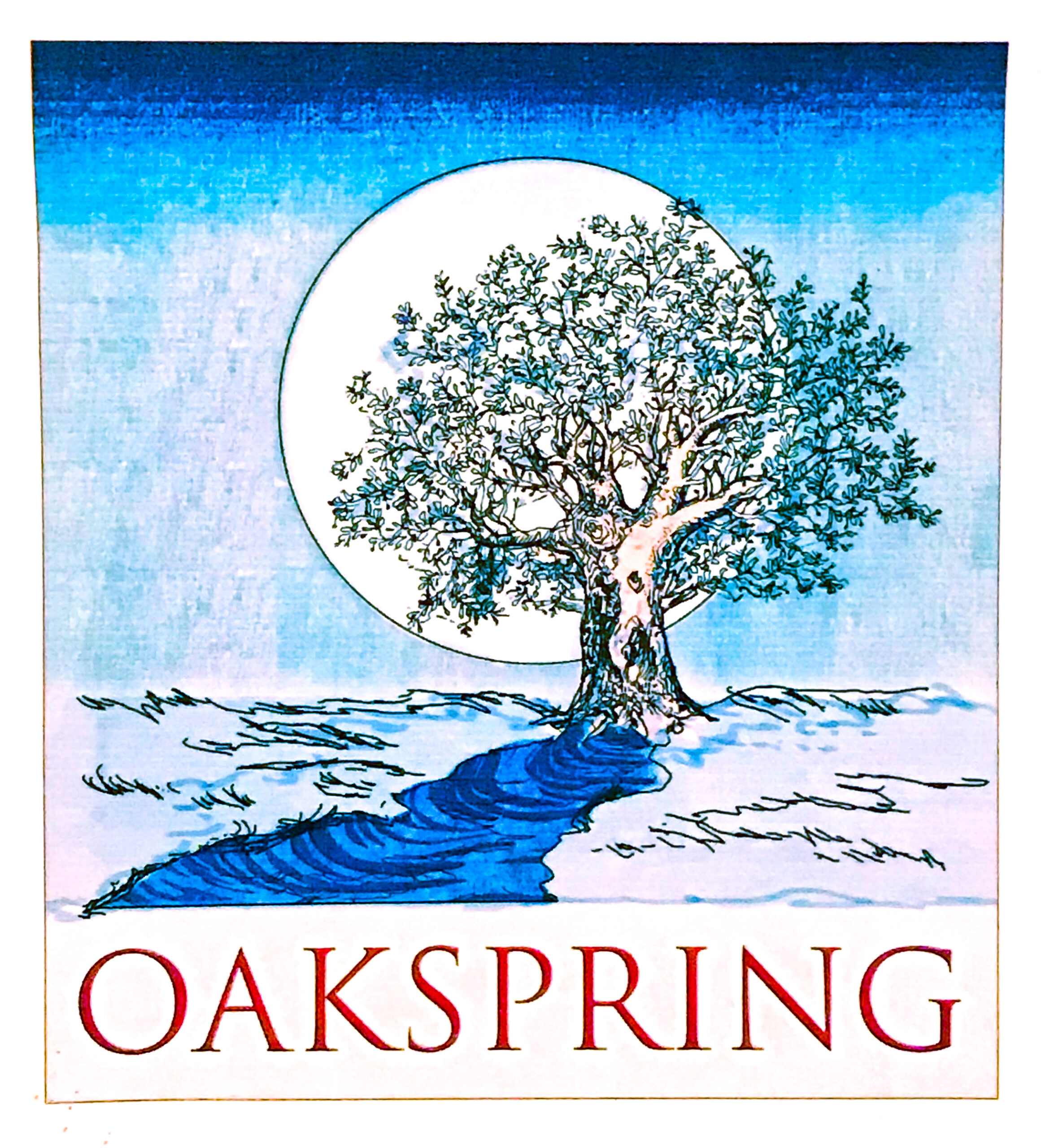
House of OakSpring
Sabbats
We are a very celebratory people and take every opportunity to rejoice in the good fortune that keeps us on this turn of the Wheel. Because our group dynamic is so large, we try to schedule the celebration of the Sabbats on a Saturday afternoon/evening to give the best opportunity for the greater congregation and friends of the House to attend. (See the Calendar for scheduled dates.)
What follows is a very brief description of the Sabbats as we celebrate them at OakSpring:
Samhain – Hallowmas – The Celtic New Year, and the time when the Sword of Power is exchanged from the Lady to the Lord. The land is no longer fallow, winter is a’commin’ in. A Dumb Supper, the last repast for those who have died this year, is shared. Traditionally, it was considered inappropriate to mourn after Samhain. Any crops still standing in the field after Samhain were considered the property of the faeries, and it was very unlucky to harvest after this day. At OakSpring, we gather together to cleanse and ready the house and property, and we elaborately carve pumpkins that then line the pathway to the circle for ritual.
Yule – Winter Solstice – The shortest day, the longest night, this is often called the Black Sun or the Midnight Sun. Many Christian traditions were borrowed from the old ways, including decorating an evergreen tree with symbols of life, Santa Claus / birth of the Sun King / war of the Holly and Oak Kings, kissing under the mistletoe, burning the Yule log, and caroling or wassailing.
Imbolc – The banishing of winter, this is the celebration at the waxing moon of the transformation of the Goddess from Crone to Maiden. The goddess statue is ritually bathed and veiled in white. Often associated with the fire goddess Brigid, implements of light such as candles and lamps are blessed. As a test of faith, the ancients extinguished the hearth fire, traveled to ritual, and returned with an ember from the bale fire with which the hearth fire was relit.
Ostara – Vernal Equinox – The day and night are of equal length. This holy day is dedicated to the fertility goddess Eostara whose symbols are the hare and the colored egg. Hmmm. Rabbits and eggs…where have we seen those two? Wait… Eostara…. Easter…. ahhhhhhhh! One of the foods traditionally used to honor the goddess Eostara was a round cake or cookie with the symbol of the equal-armed solar cross. This later came to be know as….. the hot crossed bun! (As a favorite teacher was wont to say, “There is one story, and one story only.”)
Beltane – Lady’s Day – The wheel has journeyed half way ’round to one of our biggest festivals. We traditionally gather a week before to cleanse and prepare the house and land (that’s where the idea of Spring Cleaning was born!) On the day of the celebration, we bedeck the site with flowers… wreaths, garlands, bouquets, May Baskets for the neighbors, petals, flowers, flowers, flowers! (Be sure to take your antihistamines before coming!) At Beltane, the Sword of Power returns back to the care of the Goddess. The earth is bursting with life. Anciently, the entire month of May was dedicated to the union of the God and Goddess, and it was considered very unlucky to marry during the month. Thus, there came to be a glut of weddings in June! The Beltane fire is jumped for fertility. A Maypole decorated with a wreath of flowers and ribbons of green and white is danced by celebrants dressed in white and green. The men dance in one direction, and women going the other. The intertwined ribbons are then divined to foresee the coming year.
Litha (Midsummer’s Night – Summer Solstice) – The longest day, the shortest night. This was the time when the Faerie court traveled. Fools caught on the crossroads were rumored to be captured by the faeries. The legend of the Green Man or the Green Knight, whose smiling face surrounded by leaves can be seen carved on Medieval buildings, is remembered.
Lúgnasadh – {loon-nah-sah) This was anciently the first grain harvest of the season. With a stroke of the scythe, the Corn God is voluntarily and symbolically sacrificed that the children of the Goddess may be fed. The God then moves to the Summerland as the Guardian of the Dead to warm and welcome the souls who reside there prior to resurrection and rebirth. In the Irish pantheon, the god Lugh Lámfhada of the Long Arm for whom this festival is also named, is the son of Cian (Tuatha Dé Danann) and Ethniu, the daughter of Balor, the king of the Fomoire Islands. His holiday is traditionally a time to visit sacred wells and a good opportunity for divination.
Mabon – Autumnal Equinox – Once more the days and nights are of the same length. The best of the harvest was stored for seed in preparation for the coming year’s planting. Tools are cleaned and repaired. The people ready themselves for the approaching winter
Contact
P.O. Box 223
Avondale Estates, GA 30002